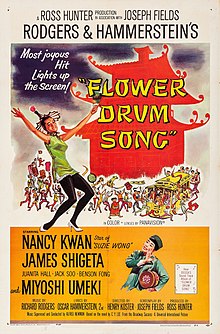
Oscar Greeley Clendenning Hammerstein II was an American lyricist, librettist, theatrical producer, and director in musical theater for nearly 40 years. He won eight Tony Awards and two Academy Awards for Best Original Song. Many of his songs are standard repertoire for vocalists and jazz musicians. He co-wrote 850 songs.

Richard Charles Rodgers was an American composer who worked primarily in musical theater. With 43 Broadway musicals and over 900 songs to his credit, Rodgers was one of the most well-known American composers of the 20th century, and his compositions had a significant influence on popular music.
Mary Rodgers was an American composer, screenwriter, and author. She wrote the novel Freaky Friday, which served as the basis of a 1976 film starring Jodie Foster, for which she wrote the screenplay, as well as three other versions. Her best-known musicals were Once Upon a Mattress and The Mad Show, and she contributed songs to Marlo Thomas' successful children's album Free to Be... You and Me.

Rodgers and Hammerstein was a theater-writing team of composer Richard Rodgers (1902–1979) and lyricist-dramatist Oscar Hammerstein II (1895–1960), who together created a series of innovative and influential American musicals. Their musical theater writing partnership has been called the greatest of the 20th century.

Flower Drum Song was the eighth musical by the team of Rodgers and Hammerstein. It is based on the 1957 novel, The Flower Drum Song, by Chinese-American author C. Y. Lee. It premiered on Broadway in 1958 and was then performed in the West End and on tour. It was adapted for a 1961 musical film.
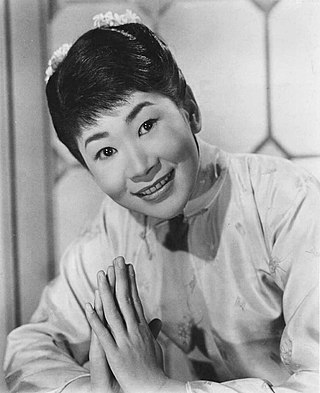
Miyoshi Umeki was a Japanese-American singer and actress. Umeki was nominated for the Tony Award and Golden Globe Award and was the first East Asia-born woman to win an Academy Award for acting.
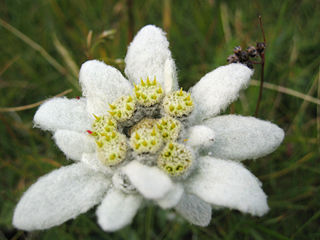
"Edelweiss" is a show tune from the 1959 Rodgers and Hammerstein musical The Sound of Music. It is named after the edelweiss, a white flower found high in the Alps. The song was created for the 1959 Broadway production of The Sound of Music, as a song for the character Captain Georg von Trapp. In the musical, Captain von Trapp and his family sing this song during the concert near the end of Act II. It is a statement of Austrian patriotism in the face of the pressure put upon him to join the navy of Nazi Germany following the Anschluss. It is also Captain von Trapp's subliminal goodbye to his beloved homeland, using the flower as a symbol of his loyalty to Austria. In the 1965 film adaptation, the song is also sung by the Captain earlier in the film when he rediscovers music with his children.
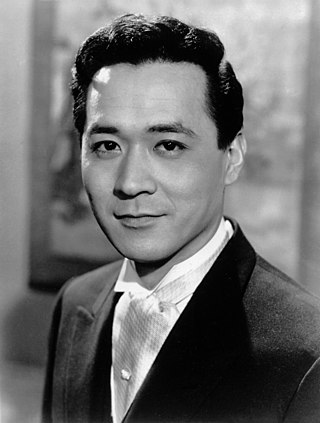
James Saburo Shigeta was an American actor and singer of Japanese descent. He was noted for his roles in The Crimson Kimono (1959), Walk Like a Dragon (1960), Flower Drum Song (1961), Bridge to the Sun (1961), Die Hard (1988), and Mulan (1998). In 1960, he won the Golden Globe Award for Most Promising Newcomer – Male, along with three other actors.
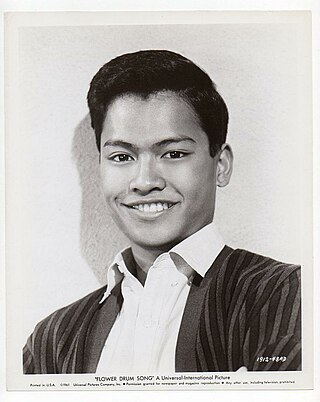
Patrick Adiarte is a Filipino-born American theater, film and television actor and dancer, known for his portrayal of foreign or Asian characters in various roles in film and television. His roles have included Prince Chulalongkorn in the Rodgers and Hammerstein musical The King and I, Wang San in Flower Drum Song, college student T.J. Padmanagham in High Time, and Ho-Jon in the television series M*A*S*H. He was a regular dancer on Hullabaloo.

Juanita Hall was an American musical theatre and film actress. She is remembered for her roles in the original stage and screen versions of the Rodgers and Hammerstein musicals South Pacific as Bloody Mary – a role that garnered her the Tony Award – and Flower Drum Song as Madame Liang.
"I Enjoy Being a Girl" is a show tune from the 1958 Rodgers and Hammerstein musical Flower Drum Song. It is the showpiece for the character of Linda Low, the lead showgirl. The musical is a comedic love story about growing up Chinese in America, the clash between the traditional values of the old country and the modern ways of America.
"Falling in Love with Love" is a show tune from the Rodgers and Hart musical The Boys from Syracuse, where it was introduced by Muriel Angelus. The musical premiered on Broadway in 1938. The song is set to a waltz, but the lyrics "remind his [Hart's] listeners of the show's skeptical tone".

Pat Suzuki is an American popular singer and actress, who is best known for her role in the original Broadway production of the musical Flower Drum Song, and her performance of the song "I Enjoy Being a Girl" in the show.
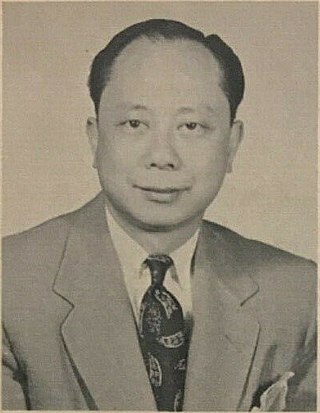
Chin Yang Lee was a Chinese American author best known for his 1957 novel The Flower Drum Song, which inspired the Rodgers and Hammerstein musical Flower Drum Song and the eponymous 1961 film which was nominated for five Academy Awards.
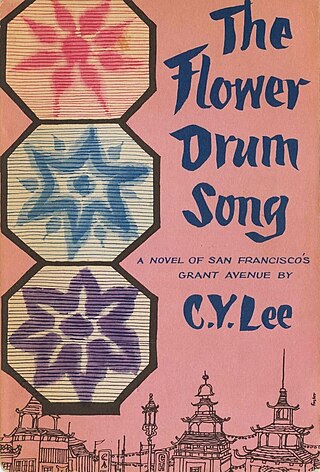
The Flower Drum Song is a novel by Chinese-American author C. Y. Lee, first published in 1957. The novel tells the story of Chinese immigrants in San Francisco, and was a bestseller in its time. It is the basis of 1958 musical Flower Drum Song, and later a movie of the same title was released in 1961, starring Nancy Kwan and James Shigeta.

Rodgers & Hammerstein's Cinderella is a 1997 American musical fantasy television film produced by Walt Disney Television, directed by Robert Iscove, and written by Robert L. Freedman. Based on the French fairy tale of the same name by Charles Perrault, the film is the second remake and third version of Rodgers and Hammerstein's musical, which originally aired on television in 1957. Adapted from Oscar Hammerstein II's book, Freedman modernized the script to appeal to more contemporary audiences by updating its themes, particularly re-writing its main character into a stronger heroine. Co-produced by Whitney Houston, who also appears as Cinderella's Fairy Godmother, the film stars Brandy in the title role and features a racially diverse ensemble cast consisting of Jason Alexander, Whoopi Goldberg, Bernadette Peters, Veanne Cox, Natalie Desselle, Victor Garber, and Paolo Montalban.

Lan Kwai Fong 2 is a 2012 blue comedy film directed by Wilson Chin and produced by Li Kuo Hsing. Lan Kwai Fong 2 is the sequel to Lan Kwai Fong and is the second film in the Lan Kwai Fong theatrical series. It was released in Hong Kong, Macao and New Zealand on 23 August 2012, and grossed over $11,031,668 in Hong Kong. It was followed by sequels Lan Kwai Fong 3. The film stars Shiga Lin, Sammy Sum, Izumt Liu, Avis Chan, and Boey Chan.
Alvin Y. F. Ing was an American singer and actor. His career included movies, television, musical theatre, and cabaret acts.
Flower Drum Song is a 1958 Rodgers & Hammerstein stage musical based on C. Y. Lee novel.
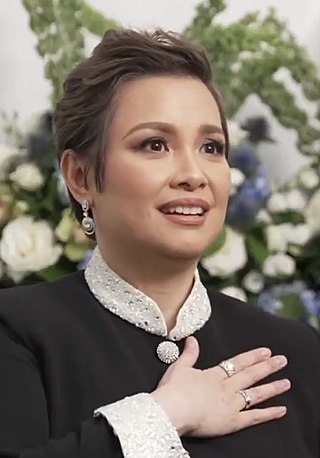
Filipina singer and actress Lea Salonga has appeared in international theatre productions, television shows, films, and video games. She made her professional debut on stage in the 1978 Repertory Philippines production of The King and I. She went on to appear and star in productions such as Cat on a Hot Tin Roof (1978), Fiddler on the Roof (1978), Annie (1980), The Sound of Music (1980), The Rose Tattoo (1980), and The Bad Seed (1981) in Manila. In 1981, Salonga made her film debut as Lisa in the Filipino comedy Tropang Bulilit. Salonga continued performing in theatre productions in Manila, including The Goodbye Girl (1982), The Paper Moon (1983), a revival of Annie (1984), and The Fantasticks (1988). From 1983 to 1985, Salonga hosted her own television variety show entitled Love, Lea. In 1986, she also appeared as a Thursday group member on the television series That's Entertainment. Throughout the 1980s, she also appeared in the Filipino films Like Father, Like Son (1985), Ninja Kids (1986), Captain Barbell (1986), Pik Pak Boom (1988), and Dear Diary (1989).
